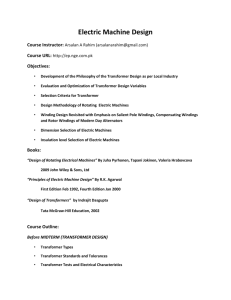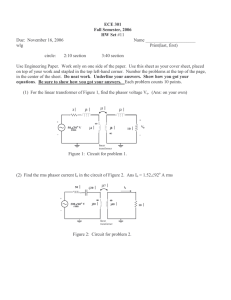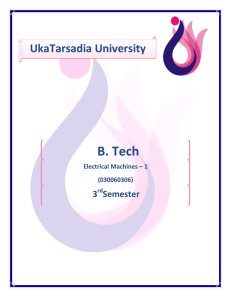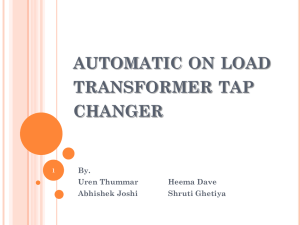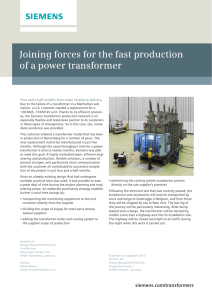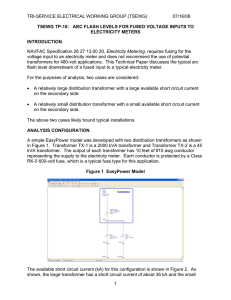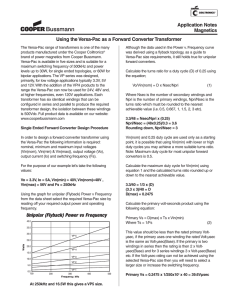Homework Set 32A PH 113 – 10
advertisement
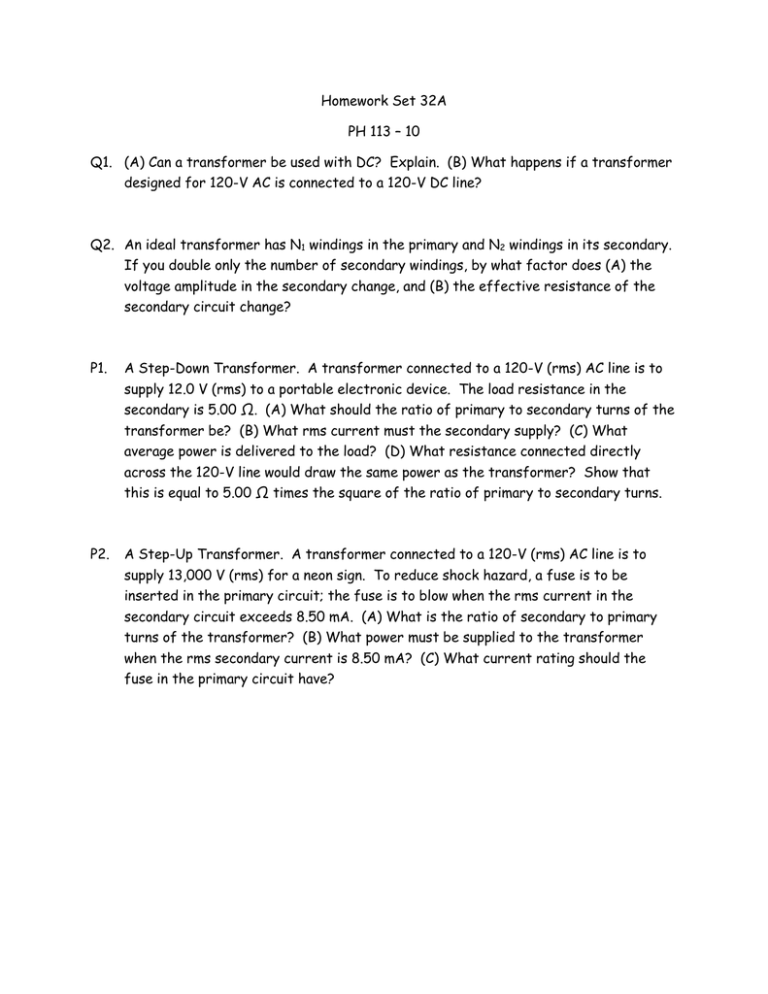
Homework Set 32A PH 113 – 10 Q1. (A) Can a transformer be used with DC? Explain. (B) What happens if a transformer designed for 120-V AC is connected to a 120-V DC line? Q2. An ideal transformer has N1 windings in the primary and N2 windings in its secondary. If you double only the number of secondary windings, by what factor does (A) the voltage amplitude in the secondary change, and (B) the effective resistance of the secondary circuit change? P1. A Step-Down Transformer. A transformer connected to a 120-V (rms) AC line is to supply 12.0 V (rms) to a portable electronic device. The load resistance in the secondary is 5.00 Ω. (A) What should the ratio of primary to secondary turns of the transformer be? (B) What rms current must the secondary supply? (C) What average power is delivered to the load? (D) What resistance connected directly across the 120-V line would draw the same power as the transformer? Show that this is equal to 5.00 Ω times the square of the ratio of primary to secondary turns. P2. A Step-Up Transformer. A transformer connected to a 120-V (rms) AC line is to supply 13,000 V (rms) for a neon sign. To reduce shock hazard, a fuse is to be inserted in the primary circuit; the fuse is to blow when the rms current in the secondary circuit exceeds 8.50 mA. (A) What is the ratio of secondary to primary turns of the transformer? (B) What power must be supplied to the transformer when the rms secondary current is 8.50 mA? (C) What current rating should the fuse in the primary circuit have?



